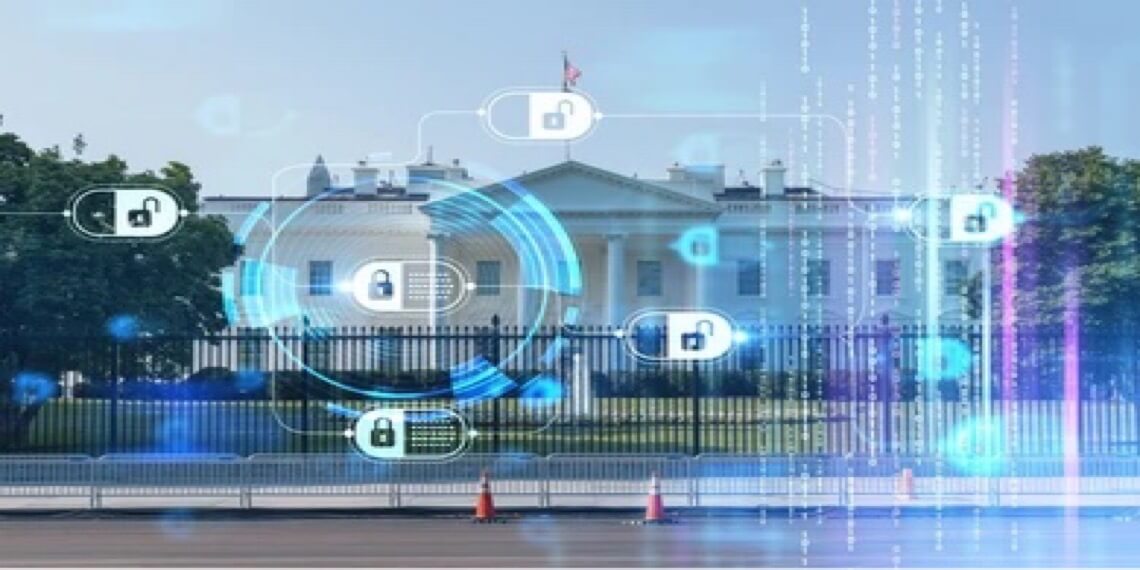Transparency in the supply chain with a blockchain-based digital product passport

In February 2022, Europeans received a wake-up call in the form of Russia’s invasion of Ukraine – an event that brought war back to Western Europe for the first time since World War II. Russia happens to be the world’s fourth largest oil producer, but is also one of the top producers of other natural resources essential to the modern global economy, including nickel, copper and silicon.
Supply chains, already under strain thanks to COVID-19, were disrupted not only by the fighting but threats of escalation. European industry shuddered, factories closed and global inflation rose and broke decades-old records in Germany, Great Britain and the United States, among others.
It is no coincidence that a month after the launch of what Russia still calls a “special military operation”, the EU rolled out its Sustainable Products Initiative (SPI), a package of legislative measures closely linked to the so-called European Green Deal and Circular Economy Action Plan (CEAP). These initiatives ultimately consider that most physical goods in the EU will become part of a “circular economy” that is almost no waste, where the products are far more recyclable, and thus require fewer natural resources.
Together, they will dramatically reduce the trading bloc’s carbon footprint and its dependence on natural resources – and Russia. Europe’s government envisions a range of new products that are more energy efficient, sustainable and transparent, but this will require a huge amount of data to be collected and shared throughout the global supply chain.
Enter the “digital product passport” or DPP: a unique technological solution that will track almost all products produced in the EU, providing sustainability information to consumers and product specifications to recycling companies.
Successful technological integration of DPPs into the supply chain has the potential to deliver radical process improvements as well as end-to-end transparency through robust data collection and smart data analytics, but only if the data can be accessed securely, in real-time and transparently enough to to win over both companies and consumers. In theory, DPPs will provide far more information than a typical passport, such as a product’s complete history, authenticated sustainability and ESG certifications, and comprehensive supplier profiles. They may even link to additional third-party data such as lab test results and carbon footprint information.
The end result should be an authenticated, product-specific report linked to the physical product via a unique digital code. While we already have plenty of experience collecting and tabulating product specifications and histories, publicly disseminating this data requires the use of a newer technology – specifically the decentralized, encrypted ledger known as blockchain. Indeed, blockchain is an ideal technology to track the sustainability of products from design to end-use in real-time while ensuring both security and transparency.
The digital product passport (DPP)
For centuries, products have been tracked by paper bills of lading, and their transport tracked only by shippers and consignees, and perhaps a customs authority if they cross national borders. This system has worked well under our current “take-make-dispose” model, where goods are simply consumed and then quickly disposed of in a landfill or otherwise.
As we transition to a sustainable, circular economy, narrow tracking simply will not be enough. We need a new mechanism that:
- Allows consumers to identify the most sustainable and ethical products before purchase, so they can make the best decisions;
- Tracks products through the end of use, and;
- Identifies the most efficient processes to recycle them into new, usable products, as well as to prevent unsold consumer products from being destroyed.
Needless to say, this mechanism must also be seamlessly integrated with global supply chains, so as not to create the kind of disruptions that we have seen during the pandemic in recent years, or that we are now experiencing due to the war in Ukraine. Together, all these requirements form the purpose of the digital product passport. And over the next few years, we will begin to see the results, although many details remain to be worked out.
Transparency
Of utmost importance is that the DPP ecosystem is transparent. What is first needed is a unique product identifier that works globally and quickly. QR codes – square, matrix barcodes invented in 1994 – were common before COVID (particularly in China, they’ve been used in place of debit and credit cards for years) and have become ubiquitous since then. They are able to connect instantly to a lot of data and would therefore be ideal as the data part of the DPP. Integrating these codes with blockchain technologies will complete the picture by making them available on a transparent, decentralized and secure network.
Here’s how it would work: By scanning the QR code, anyone—from manufacturers to regulators to consumers to recyclers—could instantly access relevant information about any product. This can include, for example, sustainability data, recycling instructions and even instructions on how to fix or upgrade used devices such as laptops or mobile phones.
The EU’s proposal to regulate ecodesign for sustainable products already requires such information to be digitally “attached” to the products until they are ready for recycling. DPP can go a step further by providing the full history of the product, much like an insurance report on a vehicle.
Data driven
The devil, as always, is in the details. In this case, the details are data. Fortunately, EU regulations already outline the general requirements for creating, accessing and sharing digital product passports. These include a provision that DPPs must be based on open standards, developed in an interoperable format and be both machine-readable and searchable. The product’s model, batch and/or item numbers must also be included in the passport
More specifically, the EU wants the DPP to contain information on a product’s durability, reusability, upgradeability, repairability, maintenance and refurbishment, as well as the presence of “problematic substances” and the product’s expected generation of waste materials. This may seem like a lot of data, but when reduced to a searchable, digital record accessible via QR code, DPP will actually be far more efficient than either paper records or product specifications distributed on manufacturers’ websites.
Fortunately, a template already exists because DPPs are in use for batteries; by 2026, every industrial and electric vehicle battery in the EU must be supplied with one. The battery passports include links to safety information as well as targets for recycled content, a major issue as EVs continue to gain market share. The EU also mandated that battery passports contain information on material procurement, carbon footprint and durability, as well as guidelines for reuse and recycling.
One issue of concern is that including too much data could compromise companies’ trade secrets. But this will undoubtedly be worked out on a case-by-case basis until agreement is reached on how much data is considered to be enough, but not too much.
Next stop: Blockchain
Batteries may be the test case, but DPPs have already been officially considered for use in other major industries across the EU, notably textiles (the waste created by so-called “fast fashion” is a major driver) and construction products. Unlike Europe, the United States did not pass its “Green New Deal” legislation.
And while it is too early to say exactly what the consequences of the EU’s approach will be globally, Apple – which is the world’s largest smartphone maker and second largest company by market value – announced last year that it will make its phones more repairable going forward.
As companies take the lead on sustainability in America, blockchain and non-fungible tokens (NFTs) in particular are changing the way many global organizations work, including governments. In Estonia, for example, blockchain was used to conduct the last presidential election. Indeed, the migration to blockchain may eventually be larger and more profound than the recent migration from proprietary servers to the cloud.
The use cases are almost endless, but to create meaningful use of blockchain technology in sustainability, companies need to understand why they should be more transparent. Moreover, they must be convinced that the DPP will not create major new burdens in terms of regulation and/or operating costs.
Furthermore, environmentalists will need reassurance that DPPs won’t self-destruct, which can easily happen if the blockchains they use are based on protocols that use massive amounts of energy — or “gas” in industry parlance. Therefore, DPPs must use low-energy protocols such as “proof of stake” and others that are currently being developed.
But these are technical problems, which can and will be addressed by engineers. The reward will be a circular and sustainable economy that is less prone to supply chain shocks like COVID and the war in Ukraine, which will ultimately make it well worth the effort.
This article was submitted by Edward Routh, Co-Founder, Relloe.
























